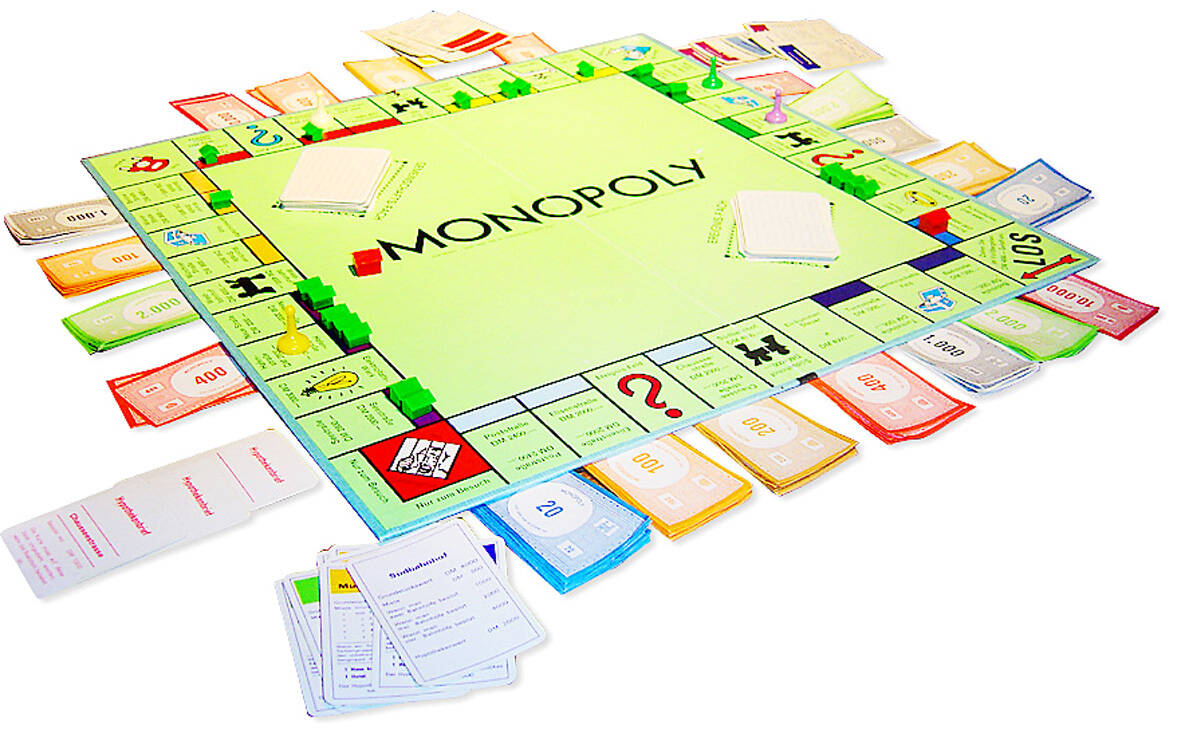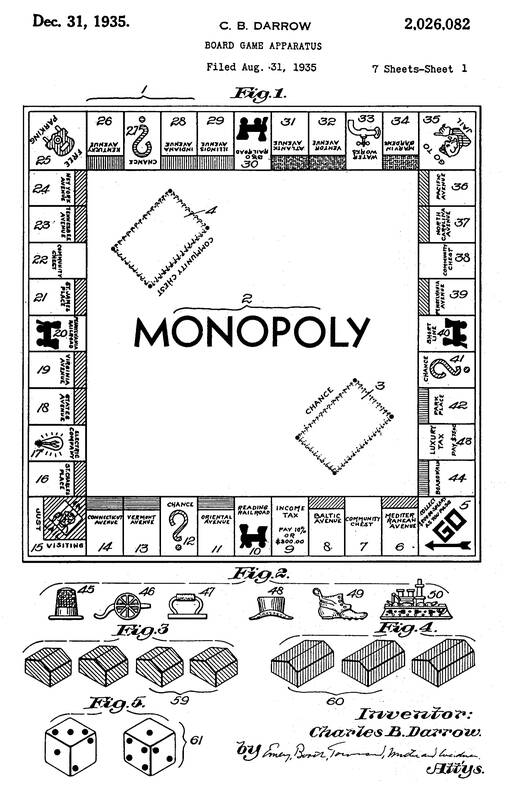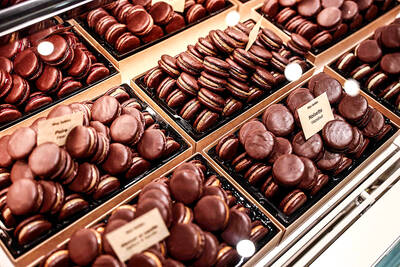The first Monopoly set I ever owned was the one everyone had — the classic edition with Mr Monopoly on the box. I bought it as a souvenir on holiday in my 30s. Twenty-five years later, I’ve got thousands of boxes stacked away in a warehouse, four Guinness World Records and have made several TV appearances.
When Guinness visited my warehouse last year, they spent a whole day counting my collection. By the end, they confirmed I had 4,379 different sets. That was the fourth time I’d broken the record.
There are many variants of Monopoly, and countries and businesses are constantly releasing their own versions. For me, it’s about the chase, finding the rare ones: a special anniversary edition, a limited production run, or just something incredibly hard to find. I’ve even got the Park Hyatt Sydney hotel edition, which you can usually get only if you stay the night there. I managed to track down a guest online, who bought it for me.

Photo courtesy of Wikimedia Commons
I’ve probably spent about £400,000 (US$534,150) on my collection over the years. I’ve been lucky to have a job at DHL for more than three decades, which has helped me keep up with my hobby. The most expensive set I own is a silver edition from London, which would have been worth £2,500 brand new — it was limited edition and used real silver. Luckily, I found mine much cheaper on eBay.
To me, the fun in Monopoly isn’t really in playing it. Once you open the box, you lose about 90 percent of its value. I keep nearly all my sets sealed. If I had a flashy Rolls-Royce, I wouldn’t drive it through the mud — that’s how I see my collection.
People think it’s mad — my girlfriend especially. She gets wound up because the sets take up space and cost money. But I couldn’t give them up. People often ask me: why Monopoly? Why not postcards or stamps? I think it’s because Monopoly is so recognizable.

Photo courtesy of Wikimedia Commons
The hunt is a huge part of the fun. In the early days, I would scour car-boot sales. I began in 2000 and, back then, finding a set meant rummaging through boxes at a market or secondhand shop. The Internet opened up a whole new world. I’ve bought sets from Japan, Brazil and the US. Sometimes I’ll spend months tracking down a rare edition. I wonder if I’m keeping the Post Office, Evri and Amazon running. Of course, storage is a challenge. I live in London, but have rented out a warehouse in Ashford, Middlesex, to keep them all.
People assume I never play Monopoly, but I’m always up for a game. It doesn’t take away from the collecting. In fact, it reminds me why I started in the first place. I’ve met so many wonderful people through the game: other collectors; friends I used to outbid on eBay; the man who runs World of Monopoly, an online archive. People who have heard about my collection have got in touch and offered to bring me a set. Some of them have even flown to the UK from abroad. We’ll take pictures together with the new set and my Guinness World Records certificate, and sometimes even spending the day sightseeing in London. It’s surreal, but it’s brilliant.
I’ve also been on TV shows, such as Bargain Hunt, and radio stations around the world, and visited the factory where the game is made. The record has brought me so many opportunities and friendships I’d never have imagined when I bought that first box.

Photo courtesy of Wikimedia Commons
Right now, I’m after the Twycross zoo set, and in the US there’s a 90th edition of the game with only 600 copies made. That would be nice to get but, really, every set is exciting. The dream is to hit 4,500, maybe even 5,000. But the big milestone will be Monopoly’s 100th anniversary in 2035 — the board game was designed by Elizabeth Magie as The Landlord’s Game in 1903, though it was first commercially released in 1935. Maybe someone will give me a big space in the city to show off the collection. That would be something.
Until then, I’ll keep hunting. There’s always another set out there — a zoo edition, a special anniversary, another release that hardly anyone knows about. If I could go back to my very first set, would I start collecting all over again? I absolutely would.

Many people noticed the flood of pro-China propaganda across a number of venues in recent weeks that looks like a coordinated assault on US Taiwan policy. It does look like an effort intended to influence the US before the meeting between US President Donald Trump and Chinese dictator Xi Jinping (習近平) over the weekend. Jennifer Kavanagh’s piece in the New York Times in September appears to be the opening strike of the current campaign. She followed up last week in the Lowy Interpreter, blaming the US for causing the PRC to escalate in the Philippines and Taiwan, saying that as

This year’s Miss Universe in Thailand has been marred by ugly drama, with allegations of an insult to a beauty queen’s intellect, a walkout by pageant contestants and a tearful tantrum by the host. More than 120 women from across the world have gathered in Thailand, vying to be crowned Miss Universe in a contest considered one of the “big four” of global beauty pageants. But the runup has been dominated by the off-stage antics of the coiffed contestants and their Thai hosts, escalating into a feminist firestorm drawing the attention of Mexico’s president. On Tuesday, Mexican delegate Fatima Bosch staged a

Taiwan can often feel woefully behind on global trends, from fashion to food, and influences can sometimes feel like the last on the metaphorical bandwagon. In the West, suddenly every burger is being smashed and honey has become “hot” and we’re all drinking orange wine. But it took a good while for a smash burger in Taipei to come across my radar. For the uninitiated, a smash burger is, well, a normal burger patty but smashed flat. Originally, I didn’t understand. Surely the best part of a burger is the thick patty with all the juiciness of the beef, the

Would you eat lab-grown chocolate? I requested a sample from California Cultured, a Sacramento-based company. Its chocolate, not yet commercially available, is made with techniques that have previously been used to synthesize other bioactive products like certain plant-derived pharmaceuticals for commercial sale. A few days later, it arrives. The morsel, barely bigger than a coffee bean, is supposed to be the flavor equivalent of a 70 percent to 80 percent dark chocolate. I tear open its sealed packet and a chocolatey aroma escapes — so far, so good. I pop it in my mouth. Slightly waxy and distinctly bitter, it boasts those bright,